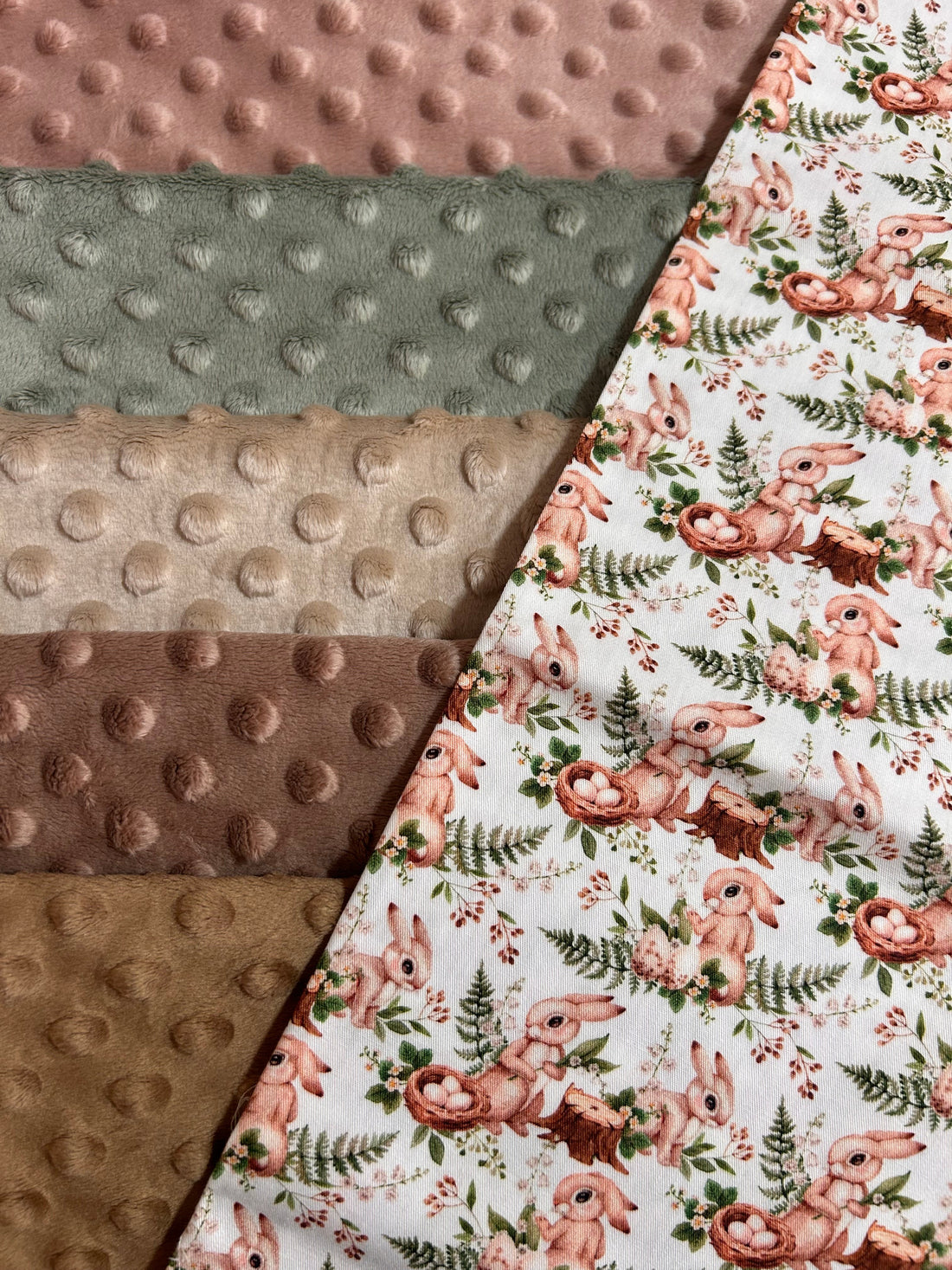
How to Sew with Minky Fabric: A Beginner’s Guide
Share
How to Sew with Minky Fabric: A Beginner’s Guide
Minky fabric is a wonderfully soft and luxurious material, perfect for blankets, baby items, plush toys, and cosy apparel. However, due to its plush texture and slight stretch, sewing with minky can be tricky for beginners. In this guide, we’ll walk you through essential tips and techniques to help you successfully sew with minky fabric.
What is Minky Fabric?
Minky fabric is a high-quality polyester fabric known for its ultra-soft feel, often used in baby blankets, throws, and stuffed animals. It comes in various textures, including smooth, dimple (dot), and even embossed or printed designs.
Essential Tools for Sewing with Minky
- Sharp Scissors or Rotary Cutter – Minky can be slippery, so a sharp cutting tool is essential for clean edges.
- Ballpoint or Stretch Needle (Size 90/14 or 100/16) – These help prevent skipped stitches and reduce fabric damage.
- Walking Foot or Even-Feed Foot – This prevents the layers from shifting while sewing.
- Clips or Wonder Clips – Pins may get lost in the plush pile, so clips are a better option.
- Basting Spray or Temporary Adhesive – Helps keep layers in place without shifting.
- Universal or Polyester Thread – Works well with minky fabric for durability and strength.
Cutting Minky Fabric
Minky fabric has a nap (direction of fibres), so be mindful of the direction when cutting to ensure consistency in your project. To reduce mess from shedding, cut with a rotary cutter and vacuum up stray fibres afterwards.
Tips for Sewing with Minky
- Use a Lower Tension Setting – Reducing tension prevents the stitches from becoming too tight and distorting the fabric.
- Increase Stitch Length – A longer stitch (3.0–3.5 mm) allows for better flexibility and prevents puckering.
- Avoid Stretching the Fabric – Let the machine guide the fabric naturally to prevent stretching and warping.
- Sew with the Right Side Facing Up – This helps prevent the presser foot from pushing the plush fibres down.
- Pin or Clip Generously – Since minky is slippery, using plenty of clips helps keep the fabric aligned.
- Use a Walking Foot – Ensures even feeding of fabric layers to prevent shifting and uneven seams.
- Consider Lining Minky with Cotton – If making blankets, pairing minky with cotton or flannel reduces stretch and makes it easier to sew.
Finishing Touches
To keep seams looking neat, consider topstitching around the edges to add a professional finish. If you’re working on a blanket, sewing a double seam adds extra durability, ensuring the fabric holds up through repeated washes.
Caring for Minky Fabric
- Machine wash in cold water on a gentle cycle.
- Avoid fabric softeners, as they can reduce the plush texture.
- Tumble dry on low heat or air dry to maintain softness.
- Do not iron directly, as heat can damage the fibres.
Final Thoughts
Sewing with minky fabric may seem intimidating at first, but with the right tools and techniques, you can create beautiful, soft, and high-quality projects. Whether you’re making a baby blanket, cuddly toy, or warm throw, these tips will help you achieve great results. Happy sewing!
Have you tried sewing with minky fabric? Share your experiences and tips in the comments below!
 is here! Shop now, pay later in 4 easy installments
is here! Shop now, pay later in 4 easy installments
